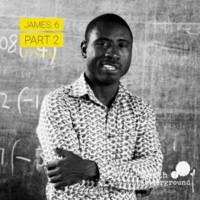
James
There are an estimated 133,000 people living in modern slavery in Ghana (GSI 2018). Ghana remains a source, transit, and destination country for men, women, and children subjected to forced labour and sex trafficking. Ghanaian boys and girls are subjected to forced labour within the country in fishing, domestic service, street hawking, begging, portering, artisanal gold mining, quarrying, herding, and agriculture, including cocoa. Research focused on the fishing industry on Lake Volta indicated that more than half of the children working on and around the lake were born in other communities and many of these children are subjected to forced labour; not allowed to attend school; given inadequate housing and clothing; and are controlled by fishermen through intimidation, violence, and limiting access to food. Boys as young as five years old are forced to work in hazardous conditions, including deep diving, and many suffer waterborne infections. A study of the prevalence of child trafficking in selected communities in the Volta and Central Regions indicated that children from nearly one-third of the 1,621 households surveyed had been subjected to trafficking, primarily in fishing and domestic servitude. James was forced into child labour by his father, in Winneba, Ghana. From the age of six to thirteen he was forced to work long hours as a child fisherman with little food and no access to medical care.
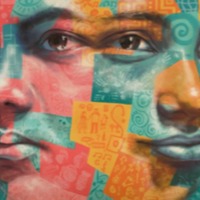
Matthew Dixon
There are an estimated 133,000 people living in modern slavery in Ghana (GSI 2018). Ghana remains a source, transit, and destination country for men, women, and children subjected to forced labour and sex trafficking. Ghanaian boys and girls are subjected to forced labor within the country in fishing, domestic service, street hawking, begging, portering, artisanal gold mining, quarrying, herding, and agriculture, including cocoa. Research focused on the fishing industry on Lake Volta indicated that more than half of the children working on and around the lake were born in other communities and many of these children are subjected to forced labor; not allowed to attend school; given inadequate housing and clothing; and are controlled by fishermen through intimidation, violence, and limiting access to food. Boys as young as five years old are forced to work in hazardous conditions, including deep diving, and many suffer waterborne infections. A study of the prevalence of child trafficking in selected communities in the Volta and Central Regions indicated that children from nearly one-third of the 1,621 households surveyed had been subjected to trafficking, primarily in fishing and domestic servitude. Matthew was trafficked into fishing on Lake Volta, Ghana after he left school to help support his family. The trafficker promised his mother monthly payment in exchange for Matthew’s labour. He was forced to work long hours in dangerous conditions under the threat of violence. After attending workshops on child trafficking Matthew’s mother realised what she had done and organised his release. Matthew is now back at school.
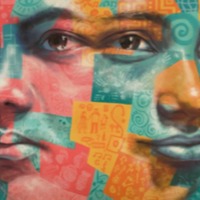
Rahat
There are an estimated 1.22 million people living in conditions of modern slavery in Indonesia (GSI 2018). Traffickers exploit both domestic and foreign victims in Indonesia. Government regulations allow employers in certain sections, including small and medium enterprises and labour-intensive industries, an exemption from minimum wage requirement, thus increasing risks of exploitation. Traffickers exploit many Indonesians through force and debt-coercion. Men, women and children are exploited in fishing, construction, on plantations, in mining and in manufacturing industries. Vessel crew on board Chinese, Korean, Vanuatuan, Taiwan, Thai, Malaysian and Philippines-flagged and/or owned fishing vessels operating in Indonesian waters subject fisherman to forced labour. Recruitment agencies lure people with promises of high wages, charge fees, assign them fake identities and labor permit documents and send them to fish long hours in waters on vessels operating under complex multinational flagging and ownership arrangements. Crews on board fishing vessels have reported low or unpaid salaries and coercive tactics such as contract discrepancies, document retention, restricted communication, poor living and working conditions, threats of violence and physical and sexual abused. Rahat was looking for work when he was encouraged by a friend to travel to Bangkok for work. He was told he would be able to make more money at sea than on land, however instead he was trafficked on to a fishing trawler in Indonesia. Conditions on the boat were awful, there was not enough food to last the crew and they were subjected to beating if they were ‘lazy.’
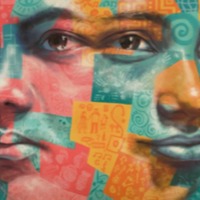
James Kofi Anan
There are an estimated 133,000 people living in modern slavery in Ghana (GSI 2018). Ghana remains a source, transit, and destination country for men, women, and children subjected to forced labor and sex trafficking. Ghanaian boys and girls are subjected to forced labor within the country in fishing, domestic service, street hawking, begging, portering, artisanal gold mining, quarrying, herding, and agriculture, including cocoa. Research focused on the fishing industry on Lake Volta indicated that more than half of the children working on and around the lake were born in other communities and many of these children are subjected to forced labor; not allowed to attend school; given inadequate housing and clothing; and are controlled by fishermen through intimidation, violence, and limiting access to food. Boys as young as five years old are forced to work in hazardous conditions, including deep diving, and many suffer waterborne infections. A study of the prevalence of child trafficking in selected communities in the Volta and Central Regions indicated that children from nearly one-third of the 1,621 households surveyed had been subjected to trafficking, primarily in fishing and domestic servitude. James Kofi Anan tells of his own experience of child trafficking for fishing on Lake Volta, Ghana. He talks about how this representative of child trafficking in the area and how he thinks people can work towards the ending of human trafficking. Kofi Anan also provides details on his own anti-child trafficking organisation Challenging Heights.
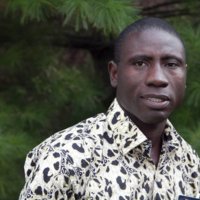
James Kofi Annan
There are an estimated 133,000 people living in modern slavery in Ghana (GSI 2018). Ghana remains a source, transit, and destination country for men, women, and children subjected to forced labour and sex trafficking. Ghanaian boys and girls are subjected to forced labour within the country in fishing, domestic service, street hawking, begging, portering, artisanal gold mining, quarrying, herding, and agriculture, including cocoa. Research focused on the fishing industry on Lake Volta indicated that more than half of the children working on and around the lake were born in other communities and many of these children are subjected to forced labour; not allowed to attend school; given inadequate housing and clothing; and are controlled by fishermen through intimidation, violence, and limiting access to food. Boys as young as five years old are forced to work in hazardous conditions, including deep diving, and many suffer waterborne infections. A study of the prevalence of child trafficking in selected communities in the Volta and Central Regions indicated that children from nearly one-third of the 1,621 households surveyed had been subjected to trafficking, primarily in fishing and domestic servitude. As the youngest child of an illiterate family, James Kofi Annan was sent away by his father to work in a fishing village nine hours away from his home in Winneba. He worked as a child fisherman in more than 20 villages between the ages of six and thirteen. He opened up a school where he lives now in Ghana and empowers children at risk through educational efforts.
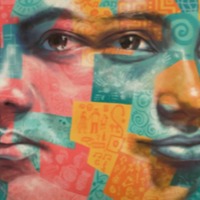
Charya
There are an estimated 610,000 people living in conditions of modern slavery in Thailand (GSI 2018). Men, women and children are victims of human trafficking for forced labour in the Thai fishing industry, subjected to physical abuse, excessive and inhumane working hours, sleep and food deprivation, forced use of methamphetamines and long trips at sea confined to the vessel. Due to the fishing industry relying on trans-shipments at sea to reduce expenditure, some find themselves trapped on long-haul trawlers for years at a time. This makes the monitoring of enslaves labour on fishing vessels costly and difficult. 201 Charya was trafficked on to a Thai fishing vessel where he was forced to work long hours and denied medication. He tells of his experience of illness on the vessel.
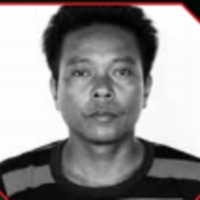
Maung Toe
There are an estimated 610,000 people living in conditions of modern slavery in Thailand (GSI 2018). Men, women and children are victims of human trafficking for forced labour in the Thai fishing industry, subjected to physical abuse, excessive and inhumane working hours, sleep and food deprivation, forced use of methamphetamines and long trips at sea confined to the vessel. Due to the fishing industry relying on trans-shipments at sea to reduce expenditure, some find themselves trapped on long-haul trawlers for years at a time. This makes the monitoring of enslaves labour on fishing vessels costly and difficult. In March 2013 Maung Toe was rescued from a Thai fishing vessel in Katang. Following his rescue he was held in a police station before being moved to a government run shelter in Ranong. After 11 months in the shelter, Maung Toe tells of his frustration at the slow court process and his desire to go home.
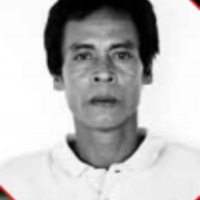
Khin Zaw Win
There are an estimated 610,000 people living in conditions of modern slavery in Thailand (GSI 2018). Men, women and children are victims of human trafficking for forced labour in the Thai fishing industry, subjected to physical abuse, excessive and inhumane working hours, sleep and food deprivation, forced use of methamphetamines and long trips at sea confined to the vessel. Due to the fishing industry relying on trans-shipments at sea to reduce expenditure, some find themselves trapped on long-haul trawlers for years at a time. This makes the monitoring of enslaves labour on fishing vessels costly and difficult. In March 2013 Khin Zaw Win was rescued from a Thai fishing vessel in Katang. Following his rescue he was held in a police station before being moved to a government run shelter in Ranong. After 11 months in the shelter, Khin Zaw Win tells of his frustration at the slow court process and his desire to go home.
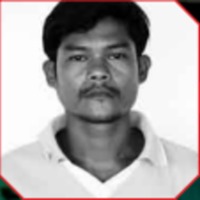
San Htike Win
There are an estimated 610,000 people living in conditions of modern slavery in Thailand (GSI 2018). Men, women and children are victims of human trafficking for forced labour in the Thai fishing industry, subjected to physical abuse, excessive and inhumane working hours, sleep and food deprivation, forced use of methamphetamines and long trips at sea confined to the vessel. Due to the fishing industry relying on trans-shipments at sea to reduce expenditure, some find themselves trapped on long-haul trawlers for years at a time. This makes the monitoring of enslaves labour on fishing vessels costly and difficult. In March 2013 San Htike Win was rescued from a Thai fishing vessel in Katang. Following his rescue he was held in a police station before being moved to a government run shelter in Ranong. After 11 months in the shelter, San Ktike Win tells of his frustration at the slow court process.
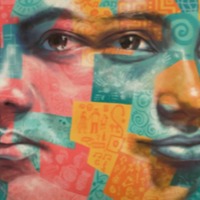
Dominic
Ghana remains a source, transit, and destination country for men, women, and children subjected to forced labor and sex trafficking. Ghanaian boys and girls are subjected to forced labor within the country in fishing, domestic service, street hawking, begging, portering, artisanal gold mining, quarrying, herding, and agriculture, including cocoa. Research focused on the fishing industry on Lake Volta indicated that more than half of the children working on and around the lake were born in other communities and many of these children are subjected to forced labor; not allowed to attend school; given inadequate housing and clothing; and are controlled by fishermen through intimidation, violence, and limiting access to food. Boys as young as five years old are forced to work in hazardous conditions, including deep diving, and many suffer waterborne infections. A study of the prevalence of child trafficking in selected communities in the Volta and Central Regions indicated that children from nearly one-third of the 1,621 households surveyed had been subjected to trafficking, primarily in fishing and domestic servitude. Dominic’s family sold him as a slave to work on Lake Volta in Ghana.
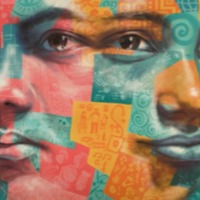
Ki Pheakdey
While the Global Slavery Index 2018 estimates that there are less than 1000 people living in conditions of modern slavery in Fiji, it nevertheless remains a source, transit and destination country for men, women and children subjected to forced labour and sexual exploitation. Workers from South and East Asian countries are often subjected to forced labour in small and informal farms and factories, construction, and on fishing vessels that transit through Fiji or board fishing vessels (mainly China and Taiwan-flagged) from Fiji ports and waters.Ki Pheakdey was 22 years old when he was trafficked by the recruitment agent Giant Ocean Intl Limited from Cambodia to Fiji where he was forced to work for 3 years on a fishing vessel.
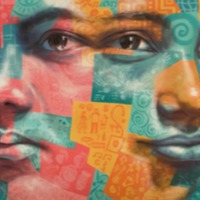
Evans
There are an estimated 133,000 people living in modern slavery in Ghana (GSI 2018). Ghana remains a source, transit, and destination country for men, women, and children subjected to forced labor and sex trafficking. Ghanaian boys and girls are subjected to forced labor within the country in fishing, domestic service, street hawking, begging, portering, artisanal gold mining, quarrying, herding, and agriculture, including cocoa. Research focused on the fishing industry on Lake Volta indicated that more than half of the children working on and around the lake were born in other communities and many of these children are subjected to forced labor; not allowed to attend school; given inadequate housing and clothing; and are controlled by fishermen through intimidation, violence, and limiting access to food. Boys as young as five years old are forced to work in hazardous conditions, including deep diving, and many suffer waterborne infections. A study of the prevalence of child trafficking in selected communities in the Volta and Central Regions indicated that children from nearly one-third of the 1,621 households surveyed had been subjected to trafficking, primarily in fishing and domestic servitude.Evans was forced to work fishing on Lake Volta as a child. He tells of one of the most dangerous aspects of fishing on the lake, untangling the net.
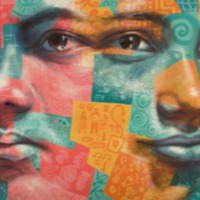
Miriam
There are an estimated 133,000 people living in modern slavery in Ghana (GSI 2018). Ghana remains a source, transit, and destination country for men, women, and children subjected to forced labor and sex trafficking. Ghanaian boys and girls are subjected to forced labor within the country in fishing, domestic service, street hawking, begging, portering, artisanal gold mining, quarrying, herding, and agriculture, including cocoa. Research focused on the fishing industry on Lake Volta indicated that more than half of the children working on and around the lake were born in other communities and many of these children are subjected to forced labor; not allowed to attend school; given inadequate housing and clothing; and are controlled by fishermen through intimidation, violence, and limiting access to food. Boys as young as five years old are forced to work in hazardous conditions, including deep diving, and many suffer waterborne infections. A study of the prevalence of child trafficking in selected communities in the Volta and Central Regions indicated that children from nearly one-third of the 1,621 households surveyed had been subjected to trafficking, primarily in fishing and domestic servitude.Miriam tells of her forced labour working on Lake Volta in Ghana.
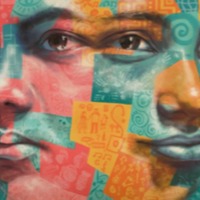
Felicia
There are an estimated 133,000 people living in modern slavery in Ghana (GSI 2018). Ghana remains a source, transit, and destination country for men, women, and children subjected to forced labor and sex trafficking. Ghanaian boys and girls are subjected to forced labor within the country in fishing, domestic service, street hawking, begging, portering, artisanal gold mining, quarrying, herding, and agriculture, including cocoa. Research focused on the fishing industry on Lake Volta indicated that more than half of the children working on and around the lake were born in other communities and many of these children are subjected to forced labor; not allowed to attend school; given inadequate housing and clothing; and are controlled by fishermen through intimidation, violence, and limiting access to food. Boys as young as five years old are forced to work in hazardous conditions, including deep diving, and many suffer waterborne infections. A study of the prevalence of child trafficking in selected communities in the Volta and Central Regions indicated that children from nearly one-third of the 1,621 households surveyed had been subjected to trafficking, primarily in fishing and domestic servitude. Felicia tells of the kind of work she was forced to do why fishing on Lake Volta in Ghana. She tells of how her employer forces them to work long hours under dangerous conditions.
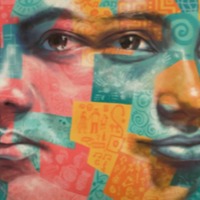
Gideon
There are an estimated 133,000 people living in modern slavery in Ghana (GSI 2018). Ghana remains a source, transit, and destination country for men, women, and children subjected to forced labor and sex trafficking. Ghanaian boys and girls are subjected to forced labor within the country in fishing, domestic service, street hawking, begging, portering, artisanal gold mining, quarrying, herding, and agriculture, including cocoa. Research focused on the fishing industry on Lake Volta indicated that more than half of the children working on and around the lake were born in other communities and many of these children are subjected to forced labor; not allowed to attend school; given inadequate housing and clothing; and are controlled by fishermen through intimidation, violence, and limiting access to food. Boys as young as five years old are forced to work in hazardous conditions, including deep diving, and many suffer waterborne infections. Gideon’s grandparents sent him to a man who promised to take care of him and help him go to school. Instead, the man enslaved Gideon in a fishing boat on Lake Volta in Ghana.

Setsofia Dowokpor
There are an estimated 133,000 people living in modern slavery in Ghana (GSI 2018). Ghana remains a source, transit, and destination country for men, women, and children subjected to forced labor and sex trafficking. Ghanaian boys and girls are subjected to forced labor within the country in fishing, domestic service, street hawking, begging, portering, artisanal gold mining, quarrying, herding, and agriculture, including cocoa. Research focused on the fishing industry on Lake Volta indicated that more than half of the children working on and around the lake were born in other communities and many of these children are subjected to forced labor; not allowed to attend school; given inadequate housing and clothing; and are controlled by fishermen through intimidation, violence, and limiting access to food. Boys as young as five years old are forced to work in hazardous conditions, including deep diving, and many suffer waterborne infections. A study of the prevalence of child trafficking in selected communities in the Volta and Central Regions indicated that children from nearly one-third of the 1,621 households surveyed had been subjected to trafficking, primarily in fishing and domestic servitude. Setsofia’s mother was suffering from ill health when she arranged for him to be trafficked to a fishing village along Lake Volta in a desperate bid to get month to treat her illness. Setsofia was just 8 years old, falsely promised an education and that he would only work part time. However he was forced to work day and night on dangerous fishing boats with little food or rest. International Needs Ghana, an FTS partner, visited Setsofia’s childhood village to talk about the need to keep children away from hazardous work and to urge slave owners to release their trafficked children. As a result of this outreach and pressure, his slave holder freed Setsofia August 12, 2016.
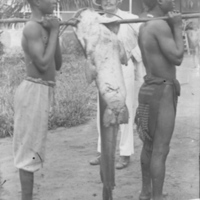
John Harris with Two African Men Holding a Large Fish
Reverend John Harris with two African men holding a large fish. This image formed part of the Harris Lantern Slide Collection. Under King Leopold II the Congo Free State used mass forced labour to extract rubber from the jungle for the European market. As consumer demand grew King Leopold II's private army - the Force Publique - used violent means to coerce the population into meeting quotas, including murder, mutilation, rape, village burning, starvation and hostage taking. Alice Seeley Harris and her husband Reverend John H. Harris were missionaries in the Congo Free State from the late 1890s. Alice produced a collection of images documenting the horrific abuses of the African rubber labourers. Her photographs are considered to be an important development in the history of humanitarian campaigning. The images were used in a number of publications. The Harrises also used the photographs to develop the Congo Atrocity Lantern Lecture which toured Britain and the the USA raising awareness of the issue of colonial abuses under King Leopold II's regime. Source: Antislavery International.
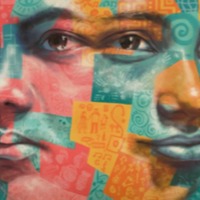
Boran
There are an estimated 610,000 people living in conditions of modern slavery in Thailand (GSI 2018). Men, women and children are victims of human trafficking for forced labour in the Thai fishing industry, subjected to physical abuse, excessive and inhumane working hours, sleep and food deprivation, forced use of methamphetamines and long trips at sea confined to the vessel. Due to the fishing industry relying on trans-shipments at sea to reduce expenditure, some find themselves trapped on long-haul trawlers for years at a time. This makes the monitoring of enslaves labour on fishing vessels costly and difficult. Boran was trafficked on to a Thai fishing vessel where he was subjected to physical violence and threats daily.
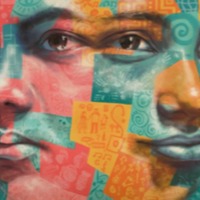
Atith
There are an estimated 610,000 people living in conditions of modern slavery in Thailand (GSI 2018). Men, women and children are victims of human trafficking for forced labour in the Thai fishing industry, subjected to physical abuse, excessive and inhumane working hours, sleep and food deprivation, forced use of methamphetamines and long trips at sea confined to the vessel. Due to the fishing industry relying on trans-shipments at sea to reduce expenditure, some find themselves trapped on long-haul trawlers for years at a time. This makes the monitoring of enslaves labour on fishing vessels costly and difficult. Atith was trafficked on to a Thai fishing vessel where he was forced to work long hours with no break, denied medical treatment and subjected to verbal and physical abuse.
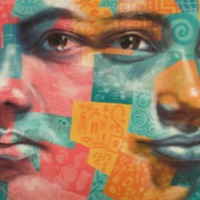
Anchaly
There are an estimated 610,000 people living in conditions of modern slavery in Thailand (GSI 2018). Men, women and children are victims of human trafficking for forced labour in the Thai fishing industry, subjected to physical abuse, excessive and inhumane working hours, sleep and food deprivation, forced use of methamphetamines and long trips at sea confined to the vessel. Due to the fishing industry relying on trans-shipments at sea to reduce expenditure, some find themselves trapped on long-haul trawlers for years at a time. This makes the monitoring of enslaves labour on fishing vessels costly and difficult. Anchaly, a Cambodian man, was looking for work when a broker told him he could earn good money working on a boat. However, when he arrived, he, along with other men, were told they had been sold.